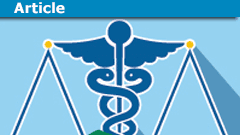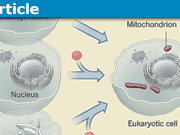The New Bioethics: A 21st Century Overview
Table of Contents
Key Points
- Worrying about the future now means recognizing the advances in technology, such as genetic engineering, that have arisen.
- There is a standard of health that fluctuates depending on relative perceptions of different biological variations on the human species that may emerge.
- We must be careful when using new technologies and understand their implications, not just the science behind them.
- Businesses and biotechnology must work together to bring new products to market.
- Education is necessary to understand the science and what to fear, and legal issues must be taken into account.
- We should understand the basics of biology, such as topsoil, before investing in esoteric technologies.
- We must consider the consequences of using new technologies, both positive and negative.
- New technologies can help enhance the human species, but caution must be taken.
- We must tie ethics to the post to ensure our future is blessed with knowledge, not blown into the wind.
Introduction
It used to be that worrying about the future meant worrying about the crop output, or whether father was really going to die from the fever that was sweeping the village. Now it means recognizing that in 20 years, a desktop computer will be more powerful than all the computers in California that exist now. Already some in academia propose that man voluntarily renders himself extinct to give way to ‘transhumans’, those of us who will be genetically engineered or modified by machines. As you might have guessed, major new questions have arisen.
Principles that guide us in using new technologies
In regards to medicine, how consistent could we be with the highest human purpose? What makes a good human life?
The governing standard in medical circles is in the standard of health. This is not a highly defined category…and in today’s world that allows for modification of human existence itself, this standard will fluctuate depending on relative perceptions of different biological variations on the human species that may emerge.
With an ever-increasing understanding of molecular biology played out against evolutionary theory, we are given two tools to realize that ultimately, nature is information, and that reshuffling information would yield new possibilities.
Reproductive and therapeutic cloning is assumed to be the easiest avenue for genetic engineering. This will be the simplest way to introduce somatic cells into germline models from where we can manipulate information. This raises questions of human life and what man is prepared to do in order to retain the integrity and sanctity crucial to existence while at the same time using these amazing new tools to improve, heal, and order our world.
The benevolent labs of medicine provided us with Rogaine. Rogaine started out as a prescribed drug that costs a thousand dollars from the doctor’s office to less than a hundred over the counter at Cosco. The strength has been increased and this now cheaper marvel of technology is one of the newest proletarian drugs… Hundreds of thousands of people are using this drug to cure the ‘disease’ of baldness especially after economists put it into the sanctity of medical concern and injected it into the media.
Rundown of the current situation
We have spent around a billion dollars on treating male pattern baldness last year. 600 million humans had malaria last year. Our response? We only spent 100 million dollars in research to conquer malaria worldwide. This accounts for 17 cents an afflicted person.
There are exciting positive ways to use new technologies in medicine but we also have to be careful especially with genetics. We must be modest at first. This will be difficult considering that the main danger stems from companies that are more driven by profit than they are by humanistic concerns.
The word human comes from the root “humus” meaning “earth” or “soil”. We were brought onto earth by the earth, framed and constrained by its parameters of reality. Reality offers a vast array of dangers to those who display arrogance. Reality can also work by changing subtle interactive dynamics. Over time on earth, there has been the emergence and production of a splendid creature (man) exhibiting relative freedom of the mind from where the moral mind has emerged. In retooling ourselves, we might lose the essence of who and what we were really meant to be.
It just may be that it is in the dynamics of daily life we will be led up the path to infinite truth. Leaving humans to evolve as is might yield the spiritual world that gives life its deepest meaning. There is a humbling order recognized by the greatest minds of our species. The word cosmos by the Greeks means arrangement and beauty… there may be a deeper meaning that we will disrupt if we continue down this path unchecked. The word human comes from earth but so does the word, humility and it is in this humility that we may find the deepest meanings of reality and existence in the pinnacle of the natural evolution of man.
The logical proposal is that we as a collective world learn the sciences as well as we can so we don’t end up fighting ghosts. We should understand how realms of science and religion mesh since ultimately, it’s one word. The argument is that the material and moral flow from a single source, a compassionate and loving God and if we tamper too much with what we are, we are in essence distorting what we were meant to be both now and in the future.
American Indians and various indigenous peoples have had difficulty transferring technology from science to practical everyday applications. In American medicine in the 1950s… tuberculosis caused Navajo death populations that exceeded that of all developed countries at the time. The antibiotics which were available failed at first. Indians were suspicious of this strange new technique to reverse or immunize against disease.
In the field of genetics, the occurrence of SKIDS, a severe AIDS-like disease revealed itself in the following manner: the incidents in the average U.S. population is 1 in 100,000 live births. Among the Amish, a group considered as a closed gene pool has 1 in every 10,000. The Navajo have 1 incident in every 4000. This disease is considered a surrogate marker for other genetic disorders. Therefore, on one hand, you have the imperative.. you want to apply technology as a doctor. However, the target population is worried about the application of technology in its subculture and this has to be respected.
More recently the development of the vaccine against a certain strain of influenza among many Native Americans has caused researchers to ask why are they genetically predisposed to morbid mortality of these agents? As scientists, how do they connect with the target population? Sure, science can be done for science’s sake but it is imperative to target Native American Indian populations to understand the science.
Education is the opportunity to come to a consensus
One must understand science. Business and biotechnology motivate strange bedfellows. The academic and corporate sectors have been working together recently. They will make a company, have it brought to market, and change millions of lives… the sectors do not fear each other… and the opportunity that exists for such mergers goes well beyond this article.
The main idea yet is to take this story of technological evolution to the man in the street, not in a New York Times “science in a nutshell” way, but in a way that addresses the position of science in a very practical manner. The question becomes… does this really work? The general population needs to know science to know what to fear or what not to fear.
Then legal issues arise. Stem cells, informed consent, in vitro clinics … what do new technologies mean in terms of patent licenses? Who is the inventor and who is the owner? Are there differences? Partnerships are important in this new kind of world. Scientists are doing basic research to benefit health and can’t do it without business, because it’s become an issue of economics too. You need to know where businesses that market products of research are coming from.
They rely primarily on the return of investment. Biotech does not make most of its money from products but from value, stock value, perceived value, and so on. If the product were to go on sale how realistic would it be in a practical world? Most technologies will die before they even get out. In terms of what to fear, we have to fear ignorance primarily because then technologies that may be harmful will flood the market. We can’t allow the general population to become guinea pigs. Basic research is encouraged for all consumers. Scientists need to do a lot more homework. Granted there are lots of fail-safes that occur in biology but eventually, we should carefully support what we are doing.
From issues of justice and who makes money from these technologies to insurance coverage of 240 million Americans from these technologies will interweave to create new industries. They come at a price, however. Duke University came out with a study that showed that it takes 500,000,000 dollars to bring a pharmaceutical drug to market.
It is a compelling interest to change what nature is. But it is irresponsible to not pay attention to it.
Some scientists advocate understanding topsoil more fully before putting money up for esoteric technologies. Ninety-nine percent of topsoil organisms are unknown by science. Yet we don’t eat without topsoil. A Martian scientist would be interested more in topsoil than in the higher primates because of the vast biological networks that exist in such an arena. In other words, by applying this new rush of advances in technology, we should use genomics to do soil test kits. Not only does the farmer want to know the pH of the topsoil, but it’s also a biotic community, and the health of crops and people eating the crops is at stake. Therefore biotech companies should develop these kits and bring them to market.
Plant breeding and their customized therapies contain carefully managed industrial processes. If some got out it would be a problem. Take for example a strain of virus used to destroy certain weeds that somehow jumped into human systems and mutated to the point of wiping out most human civilizations within a year leaving only a pocket of humans remaining.
That is the beauty of the variation in races within our species. The variation gives us a better chance at surviving massive attacks by nature. For example, 2 percent of the world’s population is immune to the AIDS virus due to a defect in their immune cell structure. They would carry on civilization if the AIDS epidemic actually wiped out most of the human race. We do not want to flirt with this risk by broadcasting genetically altered organisms into nature just quite yet.
What will our collective human values lead us to?
The hope is, tremendous responsibility… A new voice of unrestricted technologies promises to enhance the human species. This voice was only heard in science fiction. Unfortunately, now that this voice has become reality, we experienced a massive civil society deficit in respect to understanding the implications of and for new human technologies.
In the emergence of new human genetic technologies where are the organizations inherent in civil rights or environmental issues? It would be a violation to proceed without the organization of democratic bodies, and there has to be caution at a minimum once the debates are underway and technologies start manifesting themselves into our daily lives.
It seemed at first, laypeople were shut off immediately from these discussions but these issues are no more complex than euthanasia or abortion. They just need to be broken down and laid out clearly. When people understand a few basic terms it’s very empowering. Technology is a lot easier than many suspects. After all, that is the point of technology, to make things easier. It’s just a little difficult in drawing lines about the scary things.
So what countries draw on what policies? The political frenzy is coming up. Humanity has never engaged such a defining point in its evolution. As these concepts are being heard, the reflex is to incorporate the new into our existing political frameworks. But in the end, these technologies are so powerful that people who are willing to be flexible may be in a good position to contribute to effective policies. These issues, after all, cross many of the left and the right lines. We must consider everything in a fresh new light, and weigh the positives and negatives of anything we learn about. The full social consequentiality of going down any of these technological routes is, for now, ambiguous so even if you can think of possibilities, would it work that way in the real world? It may help to draw lines of ethics but we eventually must add an element of the social consequentialities as well.
As for producing post-humans nowadays, the journalistic hype fools too many people. Prospects about altering human existence will result possibly in tragic failures. Sure, it is good money to make these books about singularity and transhumanism, which many reputed scientists will tell you are full of nonsense.
All they do, argue some doctors, is open the gate for oppressive regulation by scared politicians, which in turn will affect the medical industry and backfire on the transhuman cause. Human lives will be hurt in the barring of the use of these new technologies such as stem cell research.
A wise, ethical transhuman cannot be created without remodeling the core variable, an wise, ethical human. Let us pray for a cooperative and commensurate relationship and productive existence for all involved. As the Prophet Muhammed once related to a fellow man who upon entering the village where the Prophet was staying, asked him “If there is a God surely if I leave my camel outside the inn, the camel will not run away.” Muhammed responded, “It is only after tying your camel to the post that you may leave the rest to God.” In other words, we must be sure to tie the universal pinnacle of man’s ideologies, that of ethics, to the post to ensure that our future is blessed with knowledge and entertainment rather than have our future be blown into the wind.
The chance that humans would emerge from such a universe in the way that you’re conscious enough to read what you are reading now is incredibly small. Let us not waste an incredible opportunity to master our knowledge of the universe by giving way to other beings that result in lives fraught with difficulty and subversion to a higher technological entity or entities even if that means those beings are ourselves.
FAQ
What is bioethics?
Bioethics is the study of ethical issues arising from advances in the life sciences and medicine. It covers a broad range of topics such as genetic engineering, cloning, stem cell research, organ donation and transplantation, end–of–life care, and biomedical research.
What are the core principles of bioethics?
The core principles of bioethics include respect for autonomy, beneficence, non–maleficence, and justice. Respect for autonomy involves respecting individuals’ right to make decisions about their own lives. Beneficence involves acting in a way that promotes the best interests of the patient. Non–maleficence involves avoiding the infliction of harm. Justice involves treating individuals fairly and equitably.
Who determines bioethical standards?
Bioethical standards are determined by a variety of organizations, including professional medical organizations, government agencies, and international organizations.
What is the scope of bioethics?
Bioethics covers a wide range of topics from medical research to end–of–life care. It involves the ethical implications of new technologies, clinical decisions, and public policies.
I have a BS in Information Sciences from UW-Milwaukee. I’ve helped manage Physics Forums for over 22 years. I enjoy learning and discussing new scientific developments. STEM communication and policy are big interests as well. Currently a Sr. SEO Specialist at Shopify and writer at importsem.com








Leave a Reply
Want to join the discussion?Feel free to contribute!